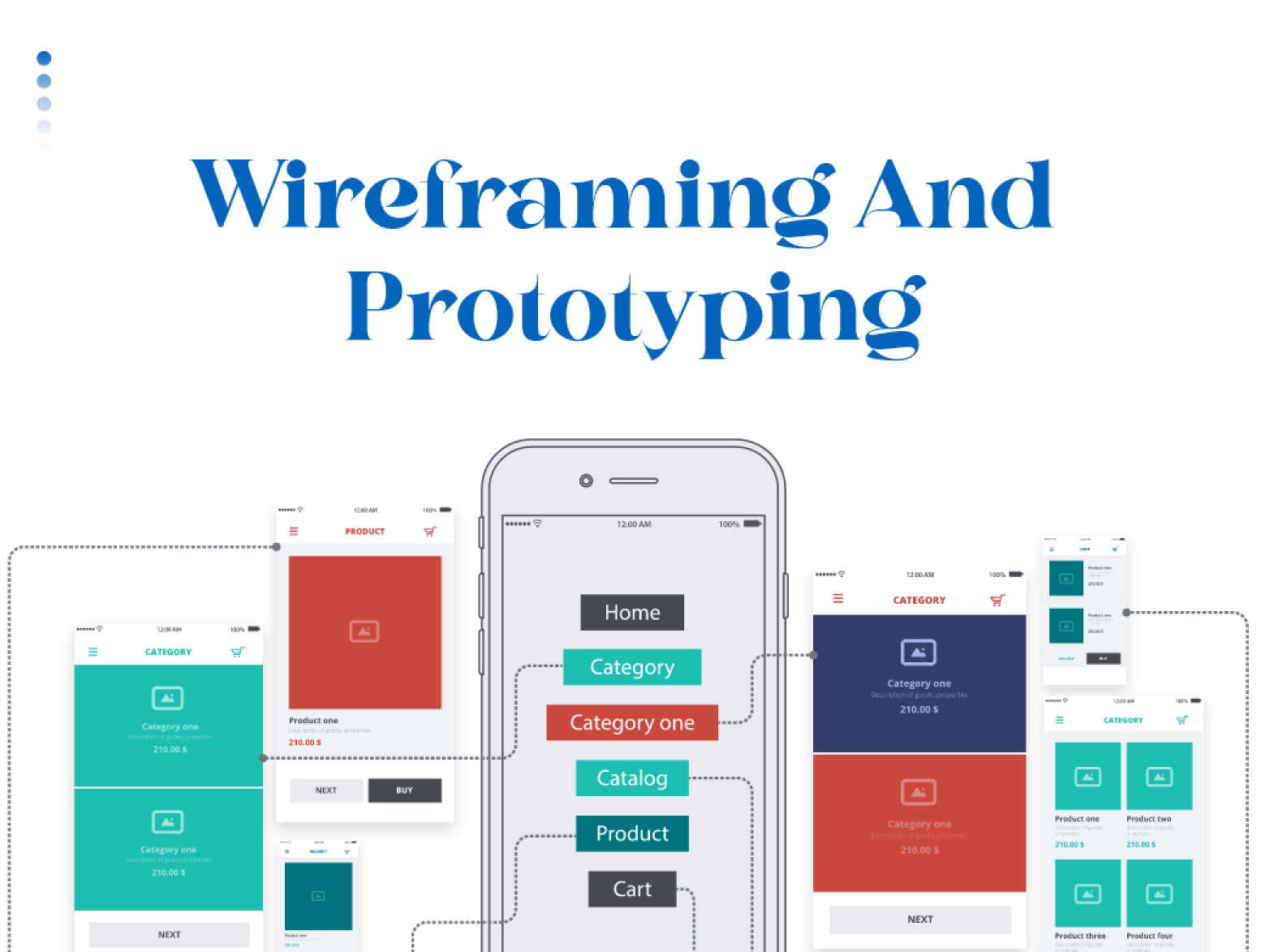The discovery phase in software development marks the initial stage where requirements are identified and business objectives are analyzed. This phase is crucial as it allows for the creation of a proposal for UI/UX design and technical implementation, establishes the project’s scope, and provides an estimate of development costs. To accomplish this, the project team must identify the desired product, its target audience, and its functionalities.
Multiple stakeholders participate in the discovery phase of a project. These stakeholders are responsible for determining project goals, specifying requirements and expectations, and providing a general overview of the environment, infrastructure, and audience.
Among the key participants during the discovery phase are business analysts and project managers. Business analysts examine project goals and growth in the market, while project managers ensure alignment between clients and vendors and consider all project requirements.
Design experts, such as UX/UI designers, play an active role in the discovery phase’s design process. They contribute to competitor analysis, audience research, and the development of the product’s vision.
Additionally, the CTO, tech lead, and engineers are involved in the technical aspect of the discovery phase in software development. These professionals gather and analyze technical requirements and leverage their experience with similar projects, as well as their knowledge of platforms, solutions, and technologies, to determine the appropriate tech stack.
Purpose of Discovery Phase
The primary purpose of the software development discovery phase is to anticipate and mitigate risks, such as market demand deficiencies, unexpected expenses, and potential financial challenges. Correcting mistakes during the planning stage can be significantly costlier in the long run. Hence, the key objectives of the discovery stage include testing ideas and implementation strategies, optimizing development costs, and expediting product launches. Here are the top 5 reasons highlighting the importance of the discovery phase:
-
-
- Define business goals, needs, and product vision.
- Establish product architecture to accomplish specific business objectives.
- Minimize development costs.
- Create a clear roadmap for product development.
- Identify and mitigate potential risks.
-
Main Stages of Discovery Phase
The Discovery phase in software development may appear enigmatic to many, including some business owners. However, it encompasses well-known business processes. Here are the main stages of the project discovery process:
Market Analysis
This stage involves researching and analyzing the target market, understanding customer needs, studying competitors, and identifying market trends and opportunities.
Product Ideation
In this stage, ideas and concepts for the product are generated. This includes brainstorming sessions, creating prototypes, and exploring different solutions to address customer pain points.
Requirements Gathering
Here, the project team collects and documents all the requirements for the product, including functional and non-functional requirements. This involves gathering input from stakeholders, conducting user interviews, and documenting user stories.
Feasibility Study
The feasibility study evaluates the technical, economic, and operational feasibility of the proposed product. It assesses factors such as technical requirements, budget, resources, and time constraints to determine if the project is viable.
Proof of Concept (POC)
In this stage, a small-scale version or prototype of the product is developed to validate the feasibility and effectiveness of the proposed solution. The POC helps to demonstrate key functionalities and gather feedback from stakeholders.
Risk Assessment
The risk assessment stage involves identifying and assessing potential risks and challenges that may arise during the development process. This includes analyzing technical risks, market risks, resource risks, and regulatory risks.
Project Planning
This stage focuses on creating a detailed project plan, including defining the project scope, setting milestones, estimating timelines and resources, and allocating tasks to team members. The project plan serves as a roadmap for the development process.
Deadlines and Priorities
Clear deadlines and priorities are set.
Team Assignment
Roles are assigned, and an expert team is dedicated to the project.
Read More: Dedicated Development Team Services
Project Documentation and Proposal
A comprehensive project requirements document (PRD) and proposal are prepared.
Contract Signing
A contract is signed for the discovery phase.
By going through these stages in the Discovery phase, software development teams can better understand the project requirements, evaluate the feasibility, mitigate risks, and set a clear direction for the subsequent development stages.
When to Opt for Discovery Phase?
The discovery phase of a software project can be useful for businesses that aim to achieve multiple goals. Discovery phase in software projects holds value for businesses pursuing diverse objectives.
The discovery phase of an IT project is recommended n the following cases which ultimately proves to be beneficial
Fundraising for Product Development
A validated idea and a well-researched roadmap can enhance the prospects of successfully raising funds.
New Product Development
The discovery phase facilitates the creation of a comprehensive roadmap for building a new digital solution from the ground up.
Product Scaling
Discover strategies to effectively expand the client base by developing the most efficient growth strategy.
By incorporating the discovery phase in these situations, businesses can optimize their software projects and align them with their specific goals.
Benefits of the Discovery Phase
We have identified five key benefits that underscore the significance of the project discovery phase in software development.
Establishing a Common Understanding
When the client and vendor are aligned, the project’s success probability increases. Through the creation of a prototype by the discovery team, you can avoid potential discrepancies between the intended and final project. This enables the vendor’s team to refer back to the prototype and make necessary adjustments, positively impacting the project budget.
Comprehensive Project Insight
Your contractor will provide a document outlining various technical implementation approaches, development milestones, and project versions. This document holds significant value in evaluating offerings from other vendors in the market.
Risk Reduction
The discovery phase in software development ensures the vendor’s team verifies the project’s viability. They address requirements, comprehend the needs of core users, and assess market conditions, significantly minimizing the risk of failure.
Budget Assessment
Without a discovery phase, the costs associated with UI/UX design and development can be exceeded. Conducting a thorough analysis from the start allows for the proper allocation of the budget toward the involvement of specialists. This approach saves money during subsequent development stages and helps prevent mistakes.
Swift Feedback Acquisition
Through the creation of a prototype by the design discovery team, you can approve or adjust your requirements based on the desired outcome. Additionally, beta testing can be conducted, allowing end-users to test the prototype using software such as Figma or InVisionApp. Their feedback provides valuable insights, enabling further enhancements to the final project.
By embracing the project discovery phase, you can enhance project understanding, mitigate risks, optimize budget allocation, and obtain valuable feedback to refine the end product.
Final Thoughts on Discovery Phase
The discovery phase is a vital component of software development, particularly when building a new digital product from the ground up, upgrading a legacy system, or embarking on a significant digital transformation project. It serves as a guarantee that the team will deliver a competent solution that fulfills your requirements. By conducting a detailed analysis before coding and interface design, the discovery phase contributes to reducing the overall project budget and ensuring timely completion.
This phase holds immense importance as it enables the analysis of a business problem, identification of optimal solutions, and validation of their viability. By defining risks and exploring strategies to mitigate them before commencing the development of the digital solution, the discovery phase significantly enhances the success rate.









